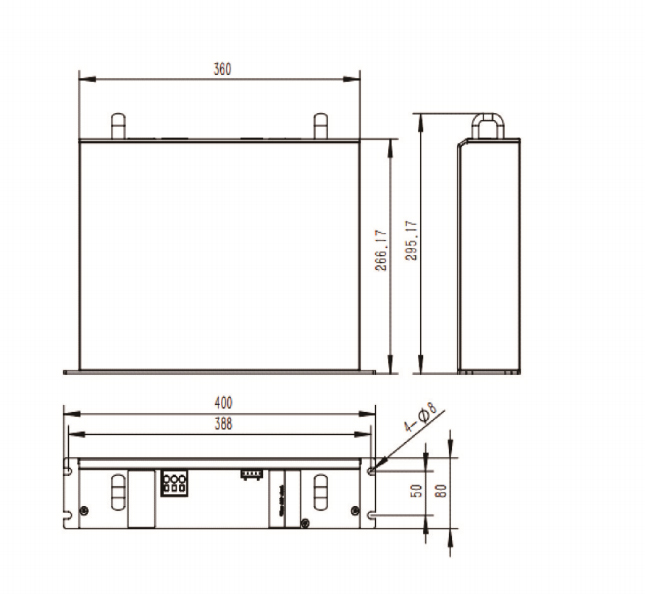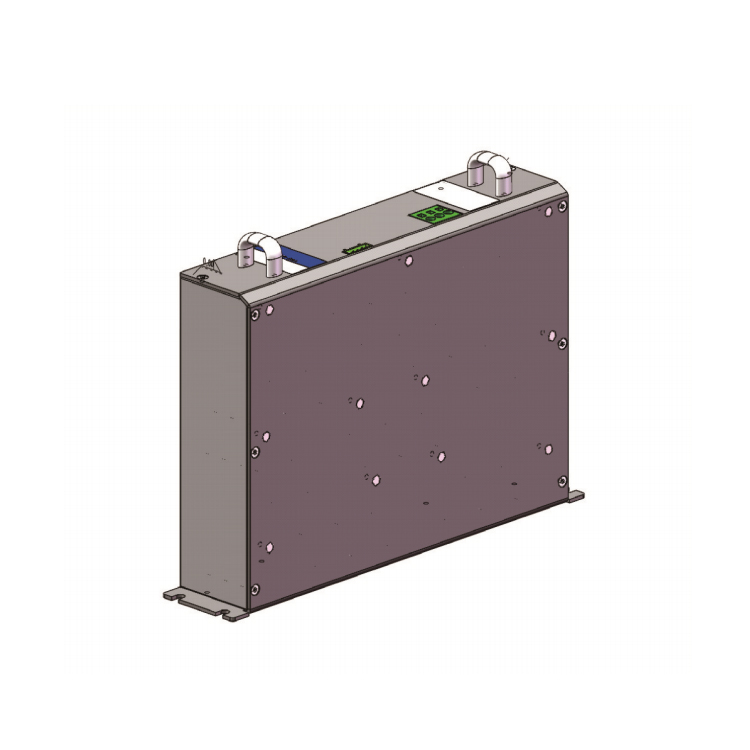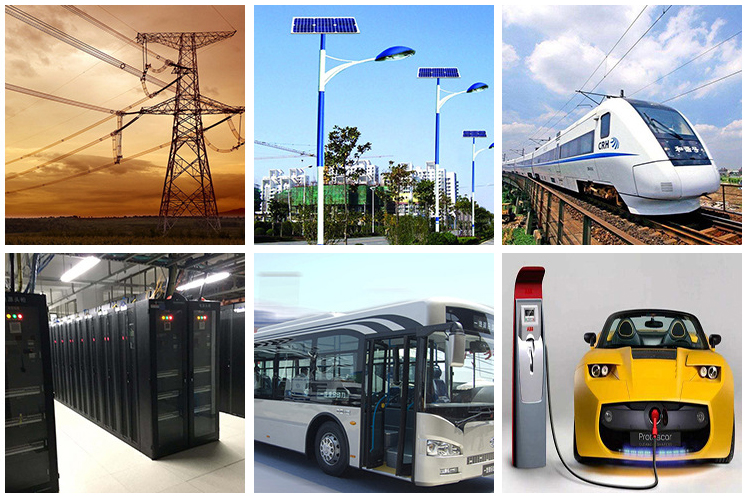Consulting phone:
135-3037-2041
(Mr.Wang)
Product introduction:
The golden capacitor module group is composed of a single super capacitor in series and a voltage sharing circuit. It has the advantages of super capacitor and has a certain withstand voltage.
Features:
Specification | characteristic | |||||||||
Rated voltage | 160V.DC | |||||||||
surge voltage | 176V.DC | |||||||||
Capacity range | 7F | |||||||||
Operating temperature range | -40℃~+65℃ | |||||||||
Product life | Normal temperature cycle life: at 25 °C, the capacitor is charged and discharged 500,000 times between the specification voltage and half-rated voltage with a constant current, the capacity decay is less than or equal to 30%, and the internal resistance change is less than or equal to 3 times. | |||||||||
High temperature endurance life: Under the condition of +65℃, the rated voltage is applied for 1000 hours, the capacity decay is less than or equal to 30%, and the internal resistance change is less than or equal to 3 times. | ||||||||||
Specifications:
Product number | Forehead Certainly Electricity Voltage (V) | Nominal capacity ( F) | Product ruler inch mm | Internal resistance | Working current (A) | peak value Electricity stream (A) | Leakage current (72hrs /µA) | can quantity (IN. h) | Energy Density (W.h/kg) | functional density (Kw / kg) | |||
Length (L) | Width (W) | high Degree (H) | ESRA C(25℃/mΩ) | (ΔT =15℃) | (ΔT =40℃) | ||||||||
SMD00480160R0007PAJZF00 | 160 | 7 | 400 | 80 | 295 | 196 | 16 | 27 | 250 | 30 | 28 | 4.1 | 2.6 |
Dimensions:


Application areas:
●UPS system smart meter, smart water meter, smart flow meter and other instruments
●Backup power supply: RAM, detonator, car recorder , Smart Meter , vacuum switch , digital camera , motor drive EVD, computer, car navigator, digital camera
●Energy storage: Smart three watch , UPS, security equipment, communication equipment, flashlights, water meters, gas meters, tail lights, small household appliances, electric toys, cordless telephones, TV sets, rice cookers
High-current work: electrified railways in the automotive industry, smart grid control, hybrid vehicles, wireless transmission
●High power support: wind power, Locomotive start , ignition, electric vehicle LED flash, solar power generation, etc.

Precautions:
Supercapacitors cannot be used in the following states:
1) Temperatures above the nominal temperature
When the capacitor temperature exceeds the nominal temperature, the electrolyte will be decomposed, and the capacitor will heat up and the capacity will decrease.
In addition, the internal resistance increases and the service life is shortened.
2) Voltage exceeding the rated voltage
When the capacitor voltage exceeds the nominal voltage, the electrolyte will be decomposed, and the capacitor will heat up and the capacity will decrease.
In addition, the internal resistance increases and the service life is shortened. Therefore, reducing the operating voltage can improve the service life.
3) Loading of reverse voltage or AC voltage
AND
1. The effect of ambient temperature on supercapacitors
The service life of supercapacitors is affected by the operating temperature. In general, if the operating temperature is increased by 10°C, the service life of the supercapacitor will be shortened by half. Please try to use it in a low temperature environment lower than the high operating temperature. If it is used beyond the high operating temperature, it may cause rapid deterioration of characteristics and damage.
The use temperature of supercapacitors should not only confirm the surrounding temperature and internal temperature of the device, but also the radiation heat from the heating element (power transistor, resistor, etc.) in the device, and the self-heating temperature caused by the ripple current. Also, do not install the heating element near the supercapacitor.
2. Please use the capacitor according to the positive and negative signs of the capacitor.
3. Please avoid using super capacitors in the following environments.
a) An environment that is directly splashed with water, salt water and oil, or an environment that is in a condensation state and is full of gaseous oil or salt.
b) An environment full of harmful gases (hydrogen sulfide, sulfurous acid, chlorine, ammonia, bromine, methyl bromide, etc.).
c) Environment splashed with acidic and alkaline solvents.
d) Direct sunlight or dusty environment.
e) environments subject to excessive vibration and shock.
4. Avoid overheating the capacitor during the soldering process (1.6mm printed circuit board should be 260°C during soldering, and the time should not exceed 5s).
5. Please avoid circuit wiring between the supercapacitor leads or between the solder joints of the connection board.
6. When using over-voltage or exceeding the operating temperature range beyond the rated conditions, it may cause the pressure valve to act, and the electrolyte will be ejected. Therefore, use a design approach that takes into account the possibility of this anomaly.
7. When charging and discharging rapidly, a voltage drop (also called IR drop) caused by internal impedance occurs at the beginning of charging and at the beginning of discharge. Therefore, please adopt a design method that takes into account the range of voltage variation.
8. Power-type large-capacity products (products above 10F) if the terminals are short-circuited in the charging state, there will be hundreds of amps of current flowing, which is dangerous. Please do not install or remove it while charging.
9. Do not put the capacitor into the dissolved solder, only stick the solder on the lead pins of the capacitor. Do not allow the welding rod to touch the capacitor heat shrink tube.
10. After installation, do not forcibly twist or tilt the capacitor.
11. When the supercapacitors are used in series, there is a problem of voltage balance between the cells.